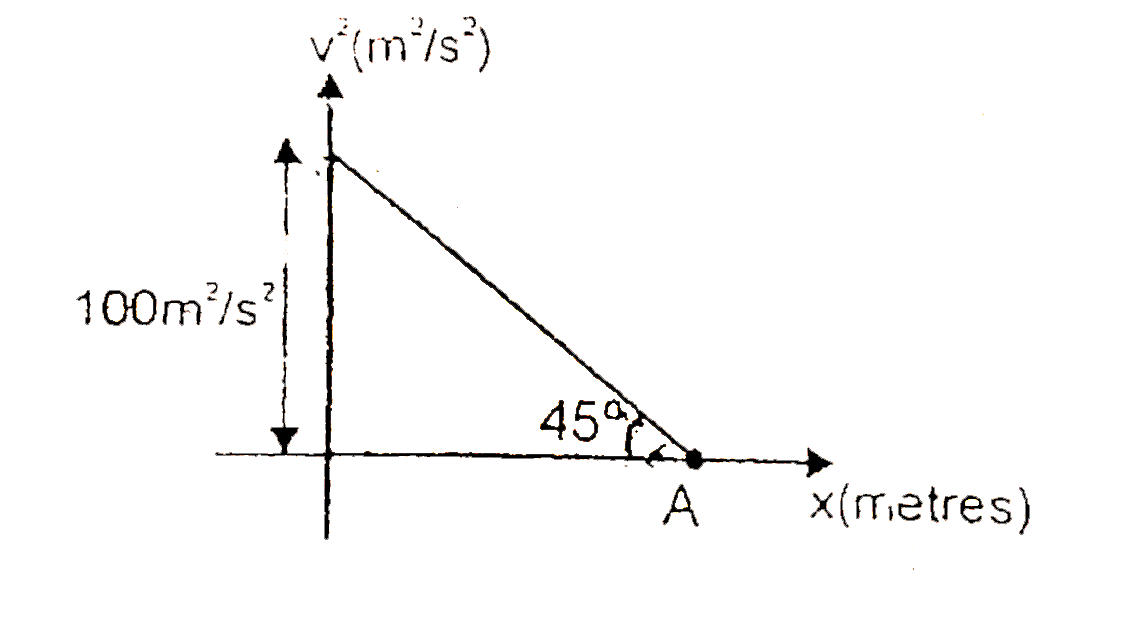A particle moves along x-axis with acceleration a=6(t−1) where t is in second. If the particle is initially at the origin and it moves along positive x-axis with v0=2m/s, find the nature of motion of the particle.
Step by step video & image solution for A particle moves along x-axis with acceleration a=6(t-1) where t is in second. If the particle is initially at the origin and it moves along positive x-axis with v_(0)=2m//s, find the nature of motion of the particle. by Physics experts to help you in doubts & scoring excellent marks in Class 11 exams.
Updated on:21/07/2023Topper's Solved these Questions
- DESCRIPTION OF MOTIONBOOK - ANURAG MISHRACHAPTER - DESCRIPTION OF MOTIONEXERCISE - Level-1
86 Videos
- DESCRIPTION OF MOTIONBOOK - ANURAG MISHRACHAPTER - DESCRIPTION OF MOTIONEXERCISE - Level-2
25 Videos
- DESCRIPTION OF MOTIONBOOK - ANURAG MISHRACHAPTER - DESCRIPTION OF MOTIONEXERCISE - Level-3
34 Videos
- FORCE ANALYSISBOOK - ANURAG MISHRACHAPTER - FORCE ANALYSISEXERCISE - Matching type
13 Videos
Similar Questions
A particle Moves along x axis satisfying the equation x=[t(t+1)t-2 where t is in seconds and x is in Meters Then the Magnitude of initial velocity of the particle in M/s is
View SolutionA particle moves along the x-axis obeying the equation x=t(t−1)(t−2), where x is in meter and t is in second
a. Find the initial velocity of the particle.
b. Find the initial acceleration of the particle.
c. Find the time when the displacement of the particle is zero.
d. Find the displacement when the velocity of the particle is zero.
e. Find the acceleration of the particle when its velocity is zero.
View Solution
Knowledge Check
A particle moves along the X-axis as x=u(t−2s)=at(t−2)2.
Ahave a displacement of 50 mBcover a distance of 40 m in reaching the groundCreach the ground in 4sDbegin to move down after being releasedA particle moves along x-axis. At time t=0, the particle is at origin and its initial veclocity is along positive x-direction. The plot of its (speed)2 versus its x-coordinate is as shown in graph.

As the particle moves the acceleration of particle :Ais always uniformBdecreases with timeCincreases with timeDinformation insufficientA particle is moving along the x-axis with an acceleration a = 2x where a is in ms–2andx is in metre. If the particle starts from rest at x=1 m, find its velocity when it reaches the position x = 3.
A8 m/sB16 m/sC4 m/sD0 m/s
A particle moves along x-axis satisfying the equation x=[t(−1)(t−2)] (t is in seconds and x is in meters). Find the magnitude of initial velocity of the particle in m/s.
View SolutionA particle experience an acceleration a=(4e−3t),m/s2 along positive x-axis,where t is time in s.If the initial velocity of the particle is 2m/s along positive x -axis,the velocity of the particle when its acceleration becomes zero is ?
View SolutionA particle experience an acceleration a=(4e−3t)ms2 along positive x-axis, where t is time in s .If the initial velocity of the particle is 2m/s along positive x-axis,the velocity of the particle when its acceleration becomes zero is?
View SolutionA particle is moving along X-axis Its acceleration at time t is proportional to its velocity at that time. The differential equation of the motion of the particle is
View SolutionA particle moves along x-axis and its acceleration at any time t is a = 2 sin (πt), where t is in seconds and a is in m/s2 . The initial velocity of particle (at time t = 0) is u = 0.
Q. Then the magnitude of displacement (in meters) by the particle from time t = 0 to t = t will be :
View Solution
